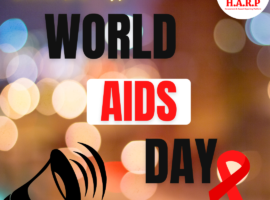The International Day for the Abolition of Slavery focuses on eradicating modern forms of slavery like trafficking, sexual exploitation, child labor, forced marriage, and forced recruitment of children into armed conflict. The Day is observed on December 2, which marks the same date that the U.N. Convention for the Suppression of the Traffic in Persons and the Exploitation of the Prostitution of Others was adopted by its member states on December 2, 1949, and it is expected to be observed by governments, organizations, and people all around the world as a day specifically set aside to rebuke all forms of modern-day slavery that still exist in the world today.
The International Labor Organization puts the number of victims of modern slavery at 40 million worldwide. And although modern slavery is not defined by any binding law, the word encompasses practices such as forced labor, debt bondage, forced marriage, human trafficking, and every other situation of exploitation under which a victim is trapped because of threats of violence, coercion, deception, or abuse of power.
From prehistoric times to the present, slavery has spanned various nations, civilizations, and religions. Similarly, victims of slavery hailed from a wide range of races and religious backgrounds. Enslaved people’s social, economic, and legal standing have varied greatly across times and places. Africans were kidnapped in the 17th and 18th centuries, sold into slavery in the American colonies, and exploited to work as slaves in the production of products such as tobacco and cotton. Though precise estimates are impossible to provide, some historians believe that 6 to 7 million enslaved individuals were carried to the New World during the 18th century alone, robbing Africa of some of its strongest and healthiest men and women.
Lincoln issued a preliminary emancipation proclamation on September 22, 1862, and on January 1, 1863, he made it official that slaves within any U.S. state, or designated part of a state shall be then and forever be free. The Emancipation Proclamation freed almost 3 million enslaved individuals in the rebel states, depriving the Confederacy of the majority of its labor forces and swaying foreign public opinion heavily in favor of the Union. Though the Emancipation Proclamation did not formally end slavery in America—that would come with the passage of the 13th Amendment after the Civil War ended in 1865—some 186,000 Black troops joined the Union Army, and approximately 38,000 died.
Even though slavery is no longer legal anywhere in the world, human trafficking is still nevertheless a global issue. As of 2013, approximately 25-40 million people were enslaved, with the majority of these people living in Asia. People were sold into slavery during Sudan’s Second Civil War, which lasted from 1983 to 2005. Evidence of child trafficking and slavery on cocoa plantations in West Africa appeared in the late 1990s.
Although, since 1995, the International Day for the Abolition of Slavery has shone the spotlight on atrocities of modern slavery and tried to inspire commitment to better humanity, December 2 wasn’t recognized as the International Day for the Abolition of Slavery until exactly a decade after a U.N. Working Group on Slavery submitted a report that tendered the date for consideration as the World Day for the Abolition of Slavery in 1985. Read Full Article




